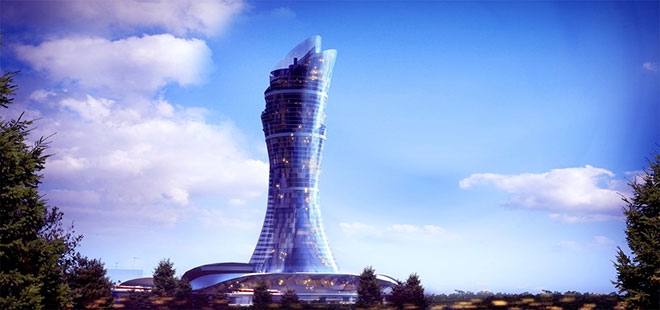Nanjing plans on joining the elite group of State-Level Development Zones according to a statement by the local government made on Wednesday.
This is only part of Jiangsu province’s grand modernisation plan, which got the go ahead from the central government in July 2013. The plan sees Nanjing, Wuxi, Changzhou, Suzhou and Zhennan undergoing an extensive facelift; by 2030 the five cities from Southern Jiangsu province are to meet the standards of developed countries.
For residents of Nanjing, however, there is even bigger news. The focus of the local government lies on the development of the so-called Jiangbei New Area, which spans the Northern parts of the Nanjing municipality from Pukou to Liuhe. However, it seems the powers that be have decided to aim higher than a “mere” overhaul; an announcement made last Wednesday, 2nd April, by the city’s administration has made official what has been rumoured for a while; the local government’s plans to make Jiangbei another State-Level Development Zone. These intentions do not come as a great surprise to the people of Pukou, who have been subjected to slogans such as “Pukou, the new Pudong” for a while now; however the statement indicates the wheels have been set in motion and a new Nanjing era may become reality sooner rather than much much later.
To Western ears “State-Level Development Zone” might be another one of those non-descript, fancy terms used by the government, that fails entirely to bring across the deeper implications. It is in effect an economic development zone supported by China’s central government, who oversees the construction and following development. These areas are under a streamlined administration and receive preferential treatment when it comes to new policies in order to speed up their respective cities’ economic progression. They effectively act as guinea pigs for reform; new policies are piloted in the designated areas to give an indication of their potential for success.
The “Pudong Analogy” makes the changes Jiangbei will face in the coming years a lot more vivid. Pudong was China’s very first State-Level Development Zone (SLDZ); designated as such in 1992, it went through a hair-raising development race over the following ten years; an image of the stark comparison between the pre-1992 fishing village that was Pudong and the glitzy skyline Shanghai now hangs its global fame upon went viral a year or two ago due to its awe-inspiring contrast.
Shanghai was but the very first in a growing list of such SLDZ’s; if Nanjing’s current plans to join the ranks of the economically privileged go forth, it will be the ninth zone in the country to be taken under the national government’s wing. Other notable examples of SLDZ’s include Tianjin’s Binhai District as well as Chongqing’s Liangjiang District, rounding off the trifecta of China’s economic powerhouses.
To get a feel for the kind of economic performance this special government patronage entails, one need only look at one of the more recent projects; Lanzhou SLDZ in Gansu province, the very first inland project, aims to achieve a GDP of ¥50 billion by 2015, ¥100 billion by 2020 and ¥270 billion by 2030.
Of course this speak of a new age sounds very exciting and glamorous; sadly the truth of the matter is that, as with anything in life, no gain comes without loss. In the case of Shanghai, it was the homes of 300,000 people who found themselves relocated to large compound living facilities, having to leave behind their small village communities and all the memories within it. In the case of Lanzhou, the construction of the new zone literally involved moving mountains. Around £2.2 billion were spent in order to flatten 700 mountains, so a level metropolis could be built on the north-western outskirts of the city. The initiative, run by Nanjing’s China Pacific Construction Group under the direction of Yan Jiehe, has received criticism especially from the international community. After all, China’s struggle against serious environmental degradation should be the number one priority, and yet projects such as the Lanzhou Mountain Flattening contribute to the deterioration of the environment.
This is one of the main points to consider in relation to the creation of an SLDZ on our very own doorstep just across the river. With an increasingly unbearable environmental situation (December last year remains a very fresh memory), one cannot help but ask if this is really the time to be investing exorbitant sums of money into a project for rapid economic development, which will undoubtedly put even more pressure on the already severely strained local eco-system. Cynics might respond that living in China often means accepting the fact that economic progress takes precedence over environmental issues.
In the meantime, the local government is further illustrating their seriousness about the overhaul with the formation of a Jiangbei New Area planning commission, presented in Wednesday’s announcement. While last year marked the designation of Nanjing’s special zone, it will be a while yet before Pukou will be rivalling its high-powered cousins all over the country; current plans date as far ahead as 2049.
Then again, keeping in mind Shangai’s gargantuan transformation, achieved in merely a decade, Nanjing could well be entering the highly-developed era by 2023. It seems, Nanjing is catching up quickly to its long-standing rival, the Big Hu. While Pudong may pride itself in being the country’s very first SLDZ, Jiangbei will have twenty years more experience and technological advancement to draw from in its construction. Watch out Pudong, here comes Pukou!









